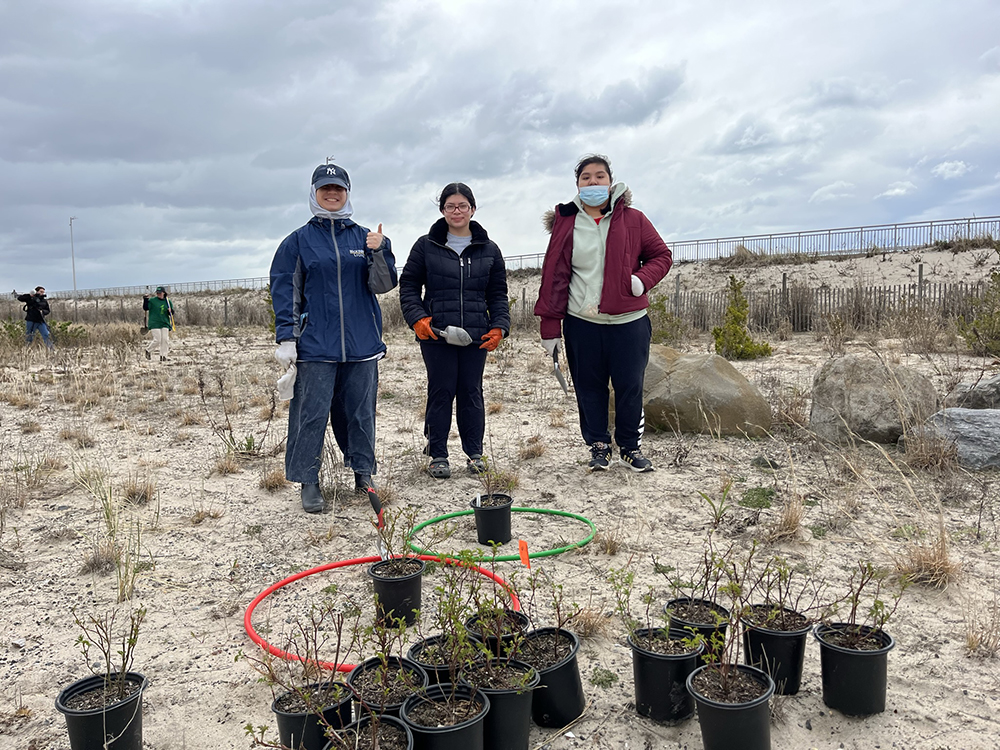HONEYBEES

By Terri Estes
Did you know that honeybees are endangered? Honeybees are facing numerous threats and have experienced significant declines in recent years. Several factors contribute to this decline including habitat loss, pesticide use, diseases and parasites. Their decline has raised serious concerns about potential impacts on food production and ecosystem stability.
Certain crops rely heavily on honeybee pollination, including many fruits, nuts and vegetables such as apples, almonds, blueberries, cucumbers and squash to name a few. If honeybees were to become extinct, it would have severe consequences for many crops globally. They are considered one of the most important pollinators for agricultural crops worldwide. According to the Food and Agriculture Organization of the United Nations (FAO), it is estimated that about 75% of global food crops benefit to some extent from animal pollination. The honeybee, while not the sole contributor to this pollination, is the largest contributor. Efforts are underway worldwide to protect honeybees and their habitats and to promote sustainable beekeeping practices, reduce pesticide use and increase awareness about their importance.
Bees have a bad rap. But that is because they are often confused with yellow jackets and wasps. As a beekeeper, I can tell you that honeybees do not want to sting you. They want to be left alone. Unless they feel threatened or their hive is disturbed, they will leave you alone. They are not the pesky insect buzzing around your iced tea or other sweet drink. That would most likely be a yellow jacket. They are very different. Both have yellow and black stripes, but bees have fuzzy or hairy bodies that help them collect pollen while yellow jackets and wasps have smooth shiny bodies. Yellow jackets and wasps can also sting multiple times and tend to be more aggressive than bees. Bees are herbivores and primarily feed on nectar and pollen while yellow jackets and most wasps are omnivorous and can scavenge for sugary foods, prey on insects and even scavenge on human food. Bees pollinate flowers and crops and make honey. Yellow jackets and wasps do not. I am sure that the good Lord put yellow jackets and wasps on this earth for some reason, but I really don’t know what it is.
A beehive consists of thousands of bees working together in a highly organized manner to ensure the survival and growth of the hive. The queen bee is the only reproductive female in the hive. She is larger than the other bees and her main role is to lay eggs. She can lay over a thousand eggs a day. If a queen gets old, or sick, the hive can make a new queen. The worker bees select a few young larvae and feed them royal jelly, a special secretion that forms a larger female with queen characteristics. Worker bees are sterile females who perform all the tasks of the hive such as collecting nectar and pollen, building comb, tending to the brood and guarding the hive. Drones are the male bees whose only purpose is to mate with a new queen. They don’t have stingers and just hang around the hive eating honey. During resource scarcity, they will be evicted from the hive.
If you see a beehive or swarm of bees, there are several local beekeepers that will come and relocate them. The Long Island Beekeepers Club has a website with a list of people who will come and remove a swarm or hive in trees or outside the home. There is also a list of questions on the website that can help you determine if, in fact, they are bees that you are seeing, or another insect.


